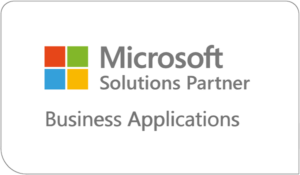Dave Wolff-Pellingra, SIS LLC Senior Construction Operations Consultant

Today I sit down with Dave Wolff-Pellingra, SIS LLC Senior Construction Operations Consultant, to explore 5 Common ERP Pain Points Across Construction, whether they are Speciality Contractors like Mechanical and Electrical or General contractors, etc. Users tend to ask the same questions each time they move into a new ERP implementation lifecycle. We believe understanding what these commonalities are ahead of time benefit those users. We also believe that consultancy as a solution is the difference between a successful implementation fully embracing new tools for a real ROI or settling in for business the way we always did it.
Q: Dave, what is Consultancy as a Solution?
A:
Consultancy as a solution is the concept that our SIS LLC consultants have had so much experience within disparate construction organisations that they are well prepared to ask and answer common questions and deal with pain points coming from all angles. We know the fears and concerns of the user community, and we can leverage our industry expertise as well as our software knowledge. We can put them at ease. We have decades of experience, and we hear their concerns.
Q: Tell us about your background – how did you get into technology?
A: A friend of mine worked for COINS as an ERP Implementation Project Manager and thought I might be a good fit. I was hired as a consultant and project manager and had to learn a lot quickly. I was there for about six and a half years with over fifteen implementations under my belt. I learnt about Construction ERP and I worked with CFOs and Operations Managers all over the country. Here at SIS LLC, I have been extremely impressed with the structured IP training and the incredibly supportive staff of construction industry experts. While I had to learn on the fly at COINS, the SIS LLC immersive modular training goes step-by-step into the industry sectors, processes, and products.
Q: Talk about the 5 common pain points across construction industry sectors.
A:
I noticed that CFOs and Operations Managers had the same process issues, concerns, and questions no matter the kind of construction their businesses performed. Whether they are Speciality, Electrical, or General Contractors, they have the same functional problems and the same process complaints. This applied to small Mechanical Contractors or Enterprise companies with multiple locations around the globe; they were saying the same things.
These are the five common pain points I’ve come across:
1. Too many, too few, or inaccurate task codes.
Task codes, also called cost codes, are the way to rake up the bits and pieces of labour performed, material purchased, subcontract work contracted, and various other costs in a way that makes it possible to compare budgeted costs from the onset of the project to the actual costs incurred, and to easily see overruns or unexpected costs. If the list of codes is too big, too small, or too complicated, contractors can face user-driven issues.
First, task codes allow for forecasting costs into the future. This is extremely important because forecasting allows Project Managers to say more accurately what the final cost will be at the end of the project, ECAC (Estimated Cost at Completion), compared to what their current costs are. This much means they can determine how far through the project they really are. It allows for the recognition of the revenue as a percentage of the total Contract Amount.
Second, these construction projects can last multiple years. If companies waited for completed projects to recognise their revenue, it would impact their predictions for cash flow and make it hard to determine the company’s current and future financial position. They may not know if they’ll have the capital to start new projects, and planning for future financing would be difficult. This makes project forecasting very important and means that the selection of the task codes by the users when they are coding invoices, logging their time, and creating POs has to be correct.
It is important to note that if the task code list is too big or complicated, users will not take the time to choose the right one; they will pick the easiest or first code on the list, and that will cause inaccurate costing, forecasting, and revenue recognition.
Finally, during the ERP implementation, this conversation comes up about what do they want to do with their cost codes? Do they want to recreate what they are doing today, completely revolutionise the current list and change everything, or somewhere in the middle?
This is where the consultancy experience comes in. We understand what users need and our conversations with them empower these clients to think about what a better solution, instead of “We’ve always done it like that.” We point out that we’re not trying to replicate what they did in their legacy system. We are trying to create the best possible solution for the future.
2. No more spreadsheets.
Quite often, the new C-Suite customers want to use every bell and whistle and all the charts and futuristic capabilities of the new ERP; they think it’s amazing! But a Project Manager who has been very happy using his spreadsheets on the side and has been asked to stop and start something new is unhappy. He believes we are not valuing what he produced with those spreadsheets. He doesn’t understand we are improving processes and efficiencies. And unfortunately, it’s not a spreadsheet that is going to make this easier. It’s an integrated system where he will see data in real time and in context.
Perhaps those project managers don’t think about the value of looking at a whole division’s projects or looking at a department’s costs spread over past and future months. They’re not appreciating that they’ll be able to collaborate with their team, so they can give their Admins and Coordinators access to all of this data to manage projects more easily. Or they can interact with their supervisors or managers to easily show off what they are working on, and not need share spreadsheets back and forth in emails but keep assets in the system.
A shared system makes it a lot less lonely than managing a project on their own. It’s much more of a team effort. A colleague of mine said, “[An ERP solution] has to be simple enough for non-technologists but still provide the information needed by accounting.”
3. Manual or dual entry.
Often, I hear, “Purchasing entered this data already on a PO. Now when the invoice comes in, Accounting has to add the lines again. I have to add it both on a change order and a on budget and that’s needless dual entry.” Our solution, SIS Construct 365, helps that along because users are entering data once. We have the ability to bring that data into the other modules to be seen and used by another functions. Document Control team members and Project Managers can work collaboratively and keep that busy work away.
4. Unifying process standardisation for an enterprise or multi-division client.
A contractor that has multiple divisions separated by different managers, or an Enterprise client who has multiple businesses under the same umbrella, will say, “I don’t want to do it differently between the two companies anymore.” They want the same project numbering process and the same style of forecasting. When they see output where they’re comparing apples to apples, they can understand more easily what they’re actually looking at.
For instance, they make a particular kind of labor cost code “100” the same across all divisions. That allows for standard processing where they might write a task guide for their employees. This makes training and onboarding much easier. If they’ve acquired a company that needs to come onto the new software, it’s easier if they have these standard sets. They can provide the list of task codes they want used, and it’s already decided. This way no one is working in a silo, and it’s so much more collaborate within their business.
5. Lack of reporting options.
The complaint I hear often is, “We enter all this data in the system, and we have a hard time getting it out. We spent 15 years creating the master report spreadsheet in our old system and now that we are in an ERP, we don’t want to change.” These users end up wanting to replicate the functionality of this master report which is likely an Excel spreadsheet on everyone’s computers with complex macros and manual entry. The problem is if they are expecting to recreate that in an ERP, it is going to difficult. New ERP users need to be open to having these other reporting options. There are so many great reports that we have out of the box, perhaps displayed differently or perhaps called something else. But this gives them an opportunity to see what we have to offer.
When you add SIS Construct 365 Project Cost Management (PCM) on top of the native project reports, the options for useful reporting are multiplied by five. They are very industry-specific and can help Project Managers to successfully manage their projects.
Our enquiry options are also very flexible. We can take many possible project data columns and arrange them however it’s needed. If new users aren’t ready yet to give up the spreadsheet report because they have been doing it that one way for years, I think our flexibility can help.


